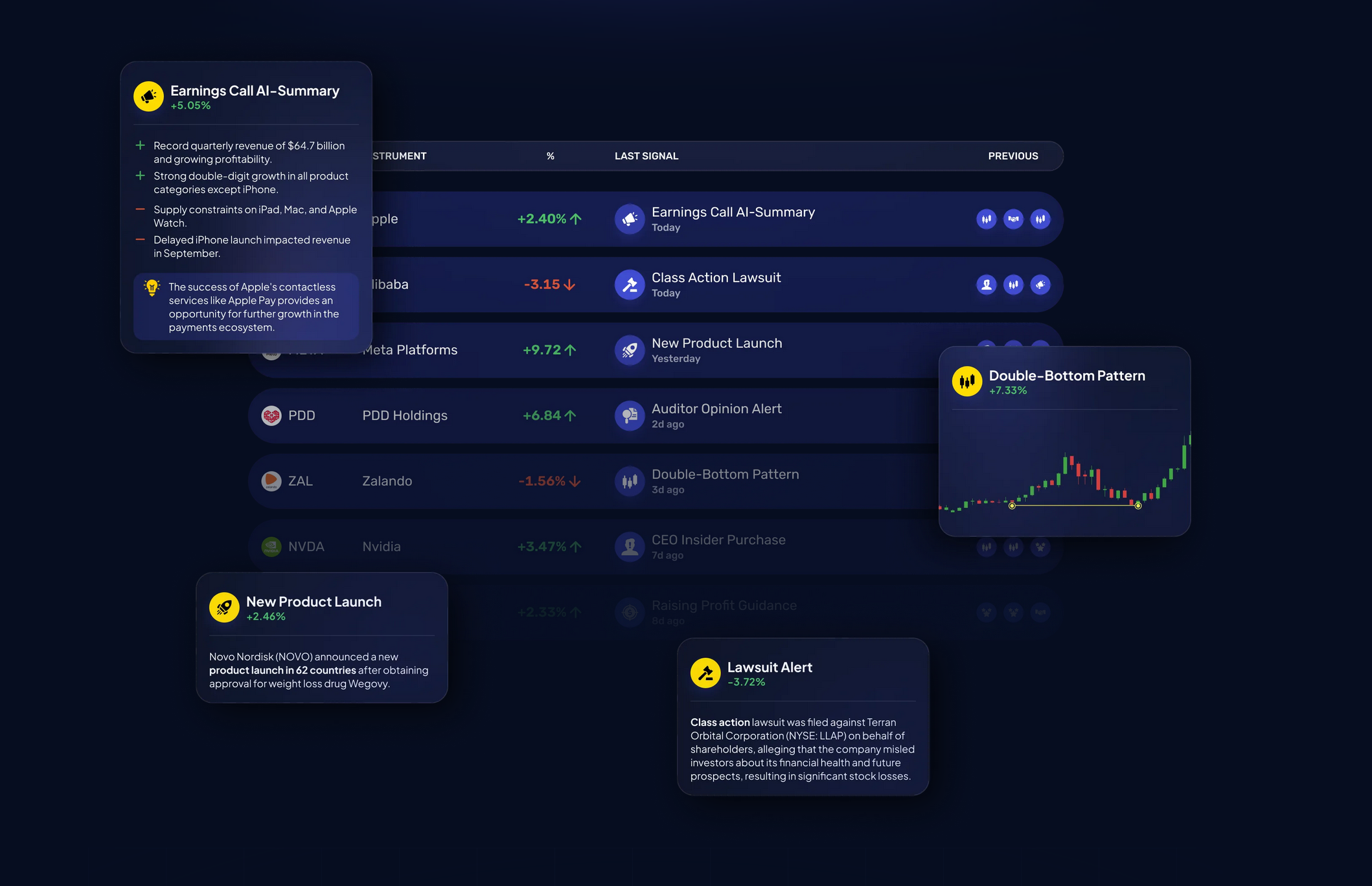The capability to modify the trading platform in accordance with your trading objectives and risk tolerance and the current market conditions is an important feature of AI-based stock prediction/analysis trading platforms. A platform that offers robust customization options can significantly improve the efficiency of your trading. Here are 10 tips on how to assess the customization capabilities of platforms.
1. Evaluate Pre-Built Strategy Templates
A variety of templates: See whether the platform has a range of pre-built strategies to suit different styles of trading (e.g., swing trading, day trading, long-term investment).
You are able to easily modify the templates and tailor them to meet your requirements.
Performance history: See whether the platform has historical performance information on a strategies that have been pre-built.
2. Assess Customized Strategy Creation
Drag-and drop tools Find platforms that have intuitive drag-and-drop interfaces that allow you to design custom strategies.
Look for options to code. For advanced users it is possible to verify if the service provides custom-made coding.
Flexibility: Ensure that your platform allows you to define your entry and exit parameters as well as risk management metrics and other important components of your strategy.
3. Check for Backtesting Capabilities
Historical data: Make sure that the platform provides sufficient historical data to backtest your strategies.
Customizable Parameters: You must be able to modify parameters, such as indicators and timeframes, when backtesting.
Performance metrics - Check to see if your platform provides detailed indicators of performance (e.g. the win rate, Sharpe coefficient, or drawdown) for all strategies tested back.
4. Evaluate Real-Time Strategy Testing
Paper trading: Make sure that the platform allows you to play around with your strategies or to test them without risking any capital.
Live testing: Determine whether you can test your strategies in real market conditions with small amounts of capital.
Real-time Adjustments: Check whether you can adjust in real-time according to the market's conditions.
5. Integrate integration with technical indicators
Check if there is an indicator library.
Custom indicators: Ensure that you can create or import custom indicators to implement in your strategies.
Combination of indicators: Check to see if the platform allows the combination of multiple indicators to create complicated strategies.
6. Check for Risk Management Tools
Stop-loss/take-profit: Ensure the platform allows you to set stop-loss and take-profit levels within your strategies.
Position sizing: Determine whether you're able to define rules for position sizing (e.g. fixed amount or a percentage of portfolio) to help manage the risk.
Risk-reward-ratio: Verify the platform's support for setting risk/reward ratios for individual trades or strategies for trading.
7. Evaluate Multi-Asset Strategy Support
Asset classes: Ensure the platform is able to support strategies across different asset classes (e.g. stocks, ETFs, options, forex).
Cross-asset Strategies: Examine whether it is possible to develop strategies that combine various asset classes.
Market coverage: Make sure the platform covers the markets in which you're in (e.g. US and international markets, copyright and so on.).
8. Review the automation, Execution and Execution
Automated Trading: Check that the platform has the ability to automate the execution of strategies using pre-defined rules.
Types of orders: Make sure that the platform is able to execute different types of orders including market, limit and stop.
Latency: Verify that the platform is able to perform trades with minimal latency particularly for strategies with high frequency.
9. Review the Strategies Optimization Tools
Parameter optimization: Ensure the platform offers tools for optimizing strategy parameters (e.g. grid search or genetic algorithms).
Machine learning integration: Verify whether the platform is using machine learning for refinement and optimization of strategies.
Scenario evaluation: Determine if your platform is capable of testing different strategies in various market scenarios, such as bearish, bullish or volatile.
10. Review Community Feedback and User Feedback
User reviews: Read the feedback of users to determine the platform's capacity to customize strategies.
Community forums - Search for if a platform has a community that is active and where members can share their own strategies.
Support resources: Make sure the platform provides tutorials, webinars, or documents that will help users develop and improve their strategies.
Bonus Tips
Trial period: Experience the platform's customisation features with a free demo or trial.
Scalability is essential. The platform should be able to manage strategies that are more complex as your trading grows.
Support for customers: Find out whether the platform has support for any strategy-related queries.
These tips will help you assess the ability of AI trading platforms to tailor their strategies. You'll be able to choose the best platform for your needs in trading and allow for you to refine and implement your plan. A platform that provides an array of customizable options can help you better adjust to market trends and enhance the performance of trading. Take a look at the most popular ai for investing url for site info including investment ai, incite, options ai, ai trading tools, ai stock trading app, ai trading, ai stock trading app, ai investing platform, ai trading tools, ai trade and more.

Top 10 Tips For Risk Management Of Ai Trading Platforms That Predict/Analyze Stock Prices
Risk management is a crucial aspect of every AI trading platform. It can help protect your investment and minimize the possibility of losses. A platform with strong risk management tools can aid you in managing uncertain markets, and make informed decisions. Here are 10 top suggestions to help you analyze the risk management capabilities of these platforms.
1. Analysis of Stop-Loss and Take-Profit Features
Customizable Levels: Make sure the platform allows you to create individual stop-loss limits and targets for take-profits in trading strategies or trades.
Trailing stops: Check if the platform you are using supports trailing stop, which automatically adjust as the market shifts in your direction.
It is important to determine whether there are stop-loss options that will ensure that your position will be closed at the specified amount, even when markets fluctuate.
2. Calculate the Size of Position Tools
Fixed amount. Be sure to have the option to define the size of your positions as the fixed dollar amount.
Percentage of portfolio: Check whether you can establish size limits as a percentage of your portfolio total to manage risk proportionally.
Risk-reward ratio: Verify whether the platform can set risk-reward ratios on individual strategies or trades.
3. Make sure you have Diversification Support
Multi-asset trading. Make sure that your platform supports different asset classes like ETFs, Forex, Options, and stocks.
Sector allocation Check to find out if there are tools available for managing and monitoring exposure to the sector.
Geographic diversification - Check that the platform supports trading on international markets. This can help diversify geographical risk.
4. Controlling leverage and margins
Margin requirements. Make sure you know the requirements for margin prior to trading.
Make sure your platform lets you to set limits on leverage in order to limit the risk of exposure.
Margin call: Ensure that the platform has timely notification for margin calls. This will help prevent account closure.
5. Assess the risk Analytics Reporting
Risk metrics. Be sure that the platform has key risk indicators (e.g. VaR Sharpe Ratio, Drawdown) that are pertinent to your portfolio.
Scenario Analysis: Check the platform you use allows the capability of generating different market scenarios in order to evaluate the risk.
Performance reports: Verify whether the platform offers comprehensive performance reports, which include the risk-adjusted return.
6. Check for Real-Time Risk Monitoring
Monitoring your portfolio: Make sure that the platform provides real-time tracking of your portfolio risk exposure.
Alerts and notifications: Determine if the platform provides real-time alerts for risks-related events (e.g. Margin breach, Stop-loss triggers).
Look for dashboards with customizable options that give you an overview of your risk profile.
7. Test Stress Testing and Backtesting
Stress testing: Ensure the platform lets you stress test your portfolio or strategies in extreme market conditions.
Backtesting: Check if the platform supports backtesting strategies based on historical data to assess risk and performance.
Monte Carlo simulations: Verify that the platform is using Monte Carlo simulations to model a range of possible outcomes and assess risk.
8. Evaluation of Compliance Risk Management Regulations
Regulation compliance: Ensure that the platform complies with relevant rules for risk management (e.g., MiFID II in Europe, Reg T in the U.S.).
Best execution: Make sure that the platform is in line with best execution practices, ensuring trades are executed at the best possible price, minimizing slippage.
Transparency. Verify that the platform is clear and makes clear disclosures of risks.
9. Check for Risk Parameters that are controlled by the User
Customized risk rules: Check whether your platform lets you set up your own risk management rules (e.g. the maximum daily loss, or maximum position size).
Automated risks controls: Verify whether the platform is able to automatically apply rules to manage risk based on your defined parameters.
Manual overrides - Check to see if the platform allows you to manually bypass automated risk control.
Review of User Feedback and Case Studies
User reviews: Review reviews from customers to evaluate the platform's effectiveness at managing risk.
Testimonials or case studies should be used to highlight the platform's capabilities to mitigate risk.
Community forums: Check whether a platform is home to a community of users who want to share strategies and strategies to manage risk.
Bonus Tips:
Free Trial: Try out the features of the platform to manage risk in real situations.
Customer support - Ensure that your platform provides a solid support for questions and issues concerning risk.
Educational resources - Check to see whether the platform offers instructional resources and videos on best practices in risk management.
The following tips can assist you in evaluating risk management capabilities that are offered by AI stock-predicting and analyzing platforms. You'll be able to pick a platform that can protect your capital while minimizing potential losses. Effective risk management tools are essential for navigating unstable markets and achieving long-term trading success. Take a look at the most popular best ai for stock trading for more tips including best ai stocks, ai stock predictions, invest ai, ai stock prediction, chart ai trading, how to use ai for stock trading, best ai stocks to buy now, ai options trading, ai share trading, chart analysis ai and more.
